Joyeux Noël / Battlefield celebrates French Christmas traditions
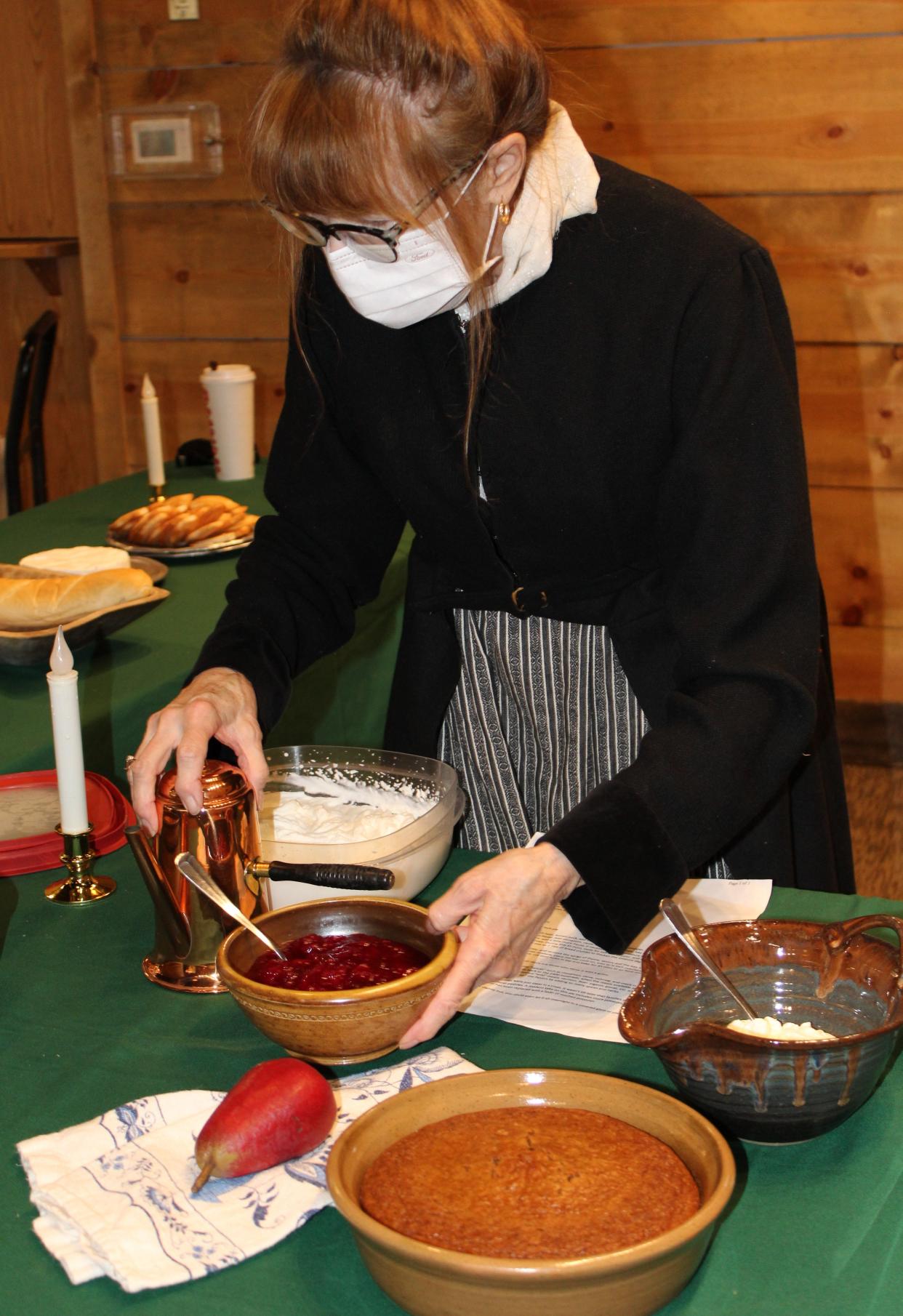
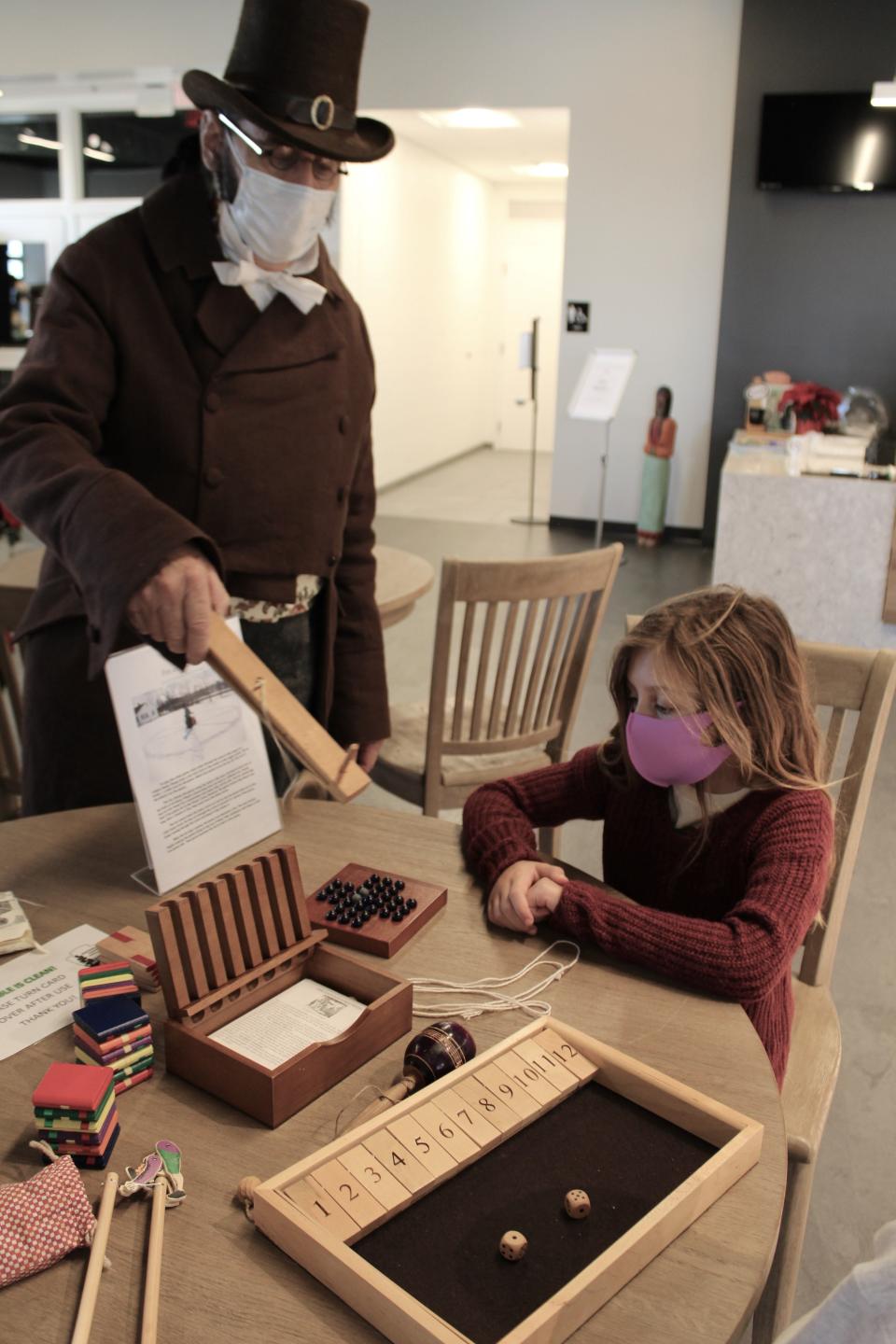
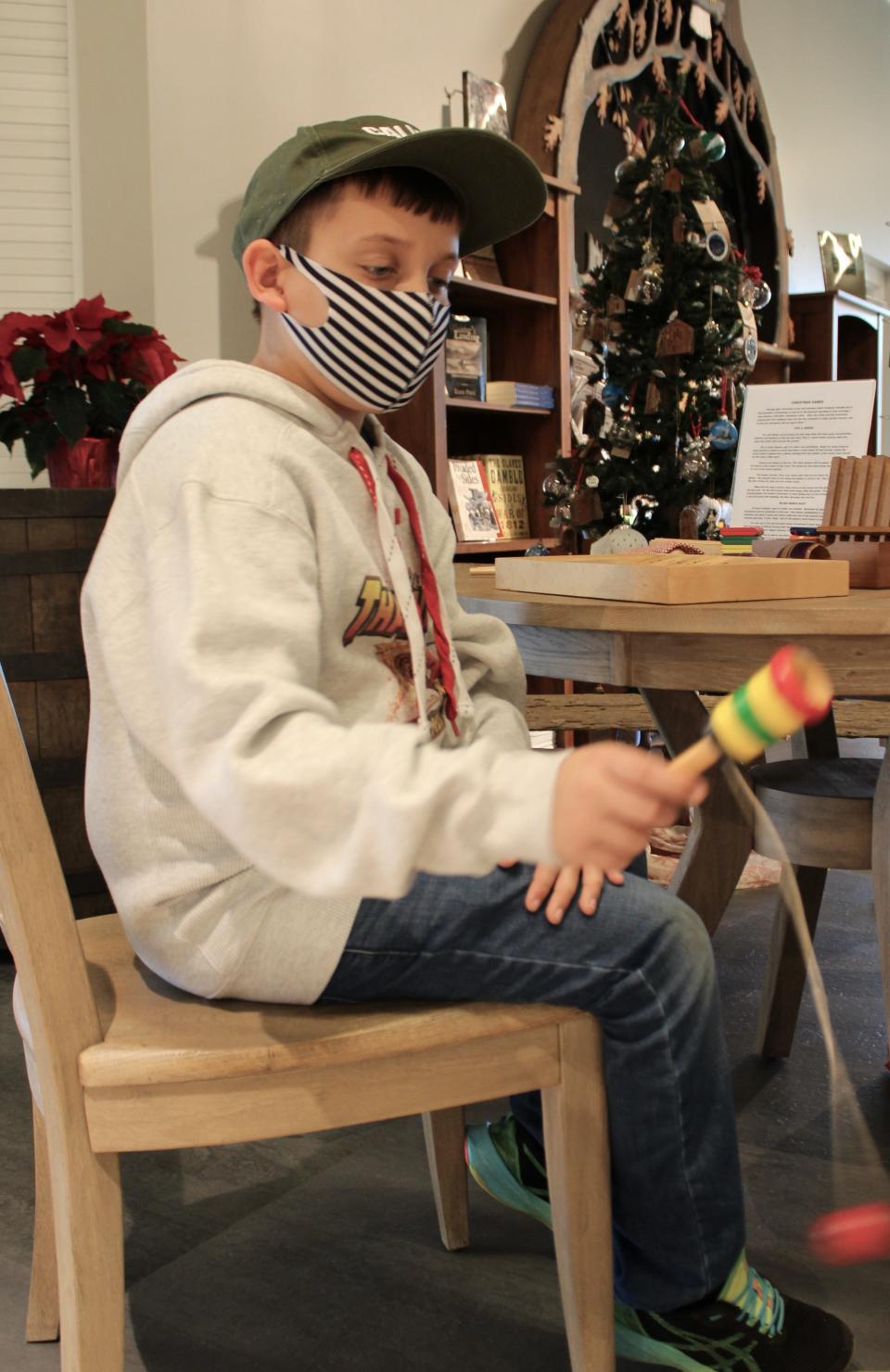
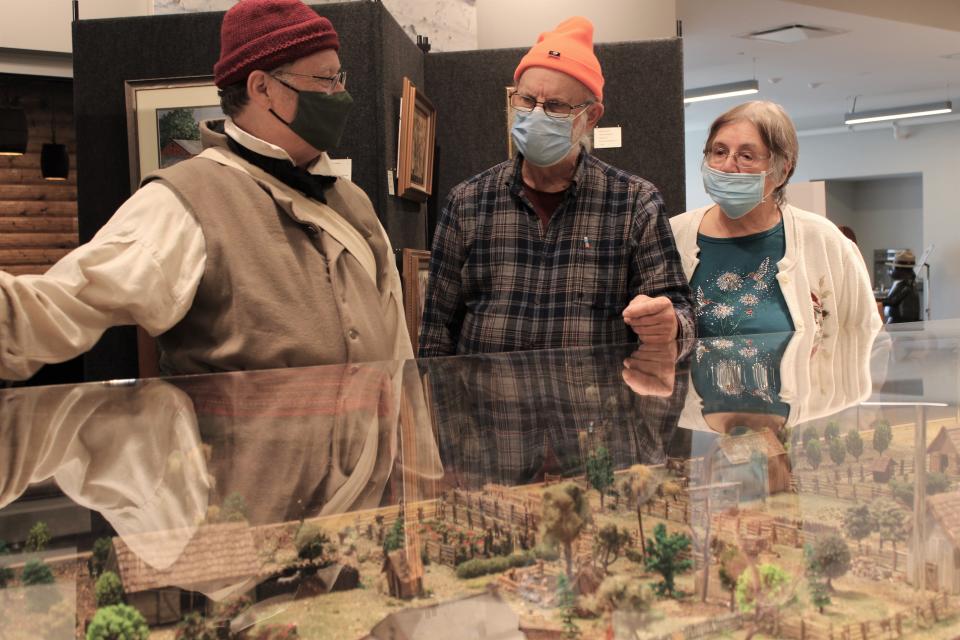
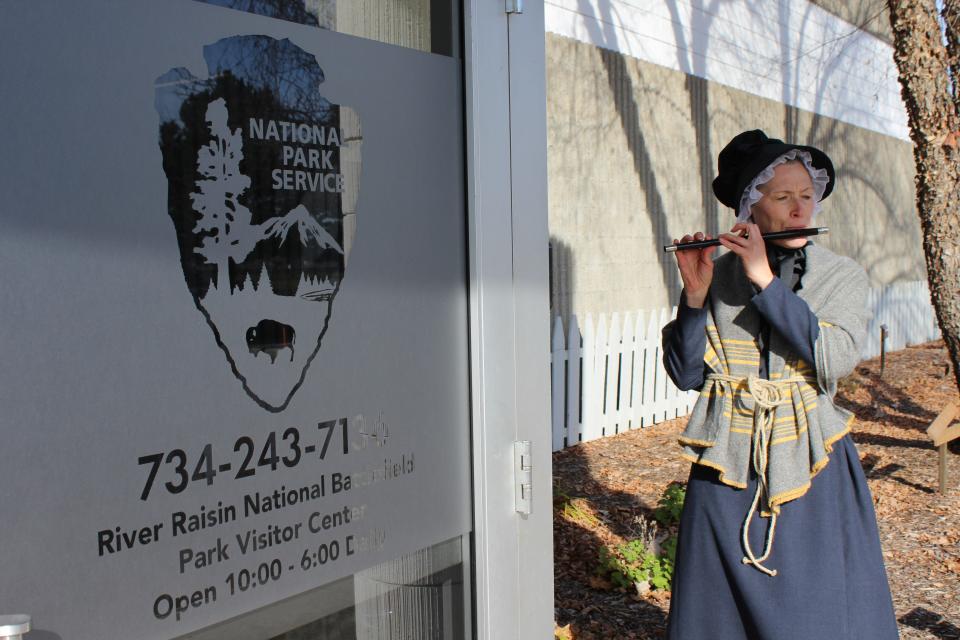
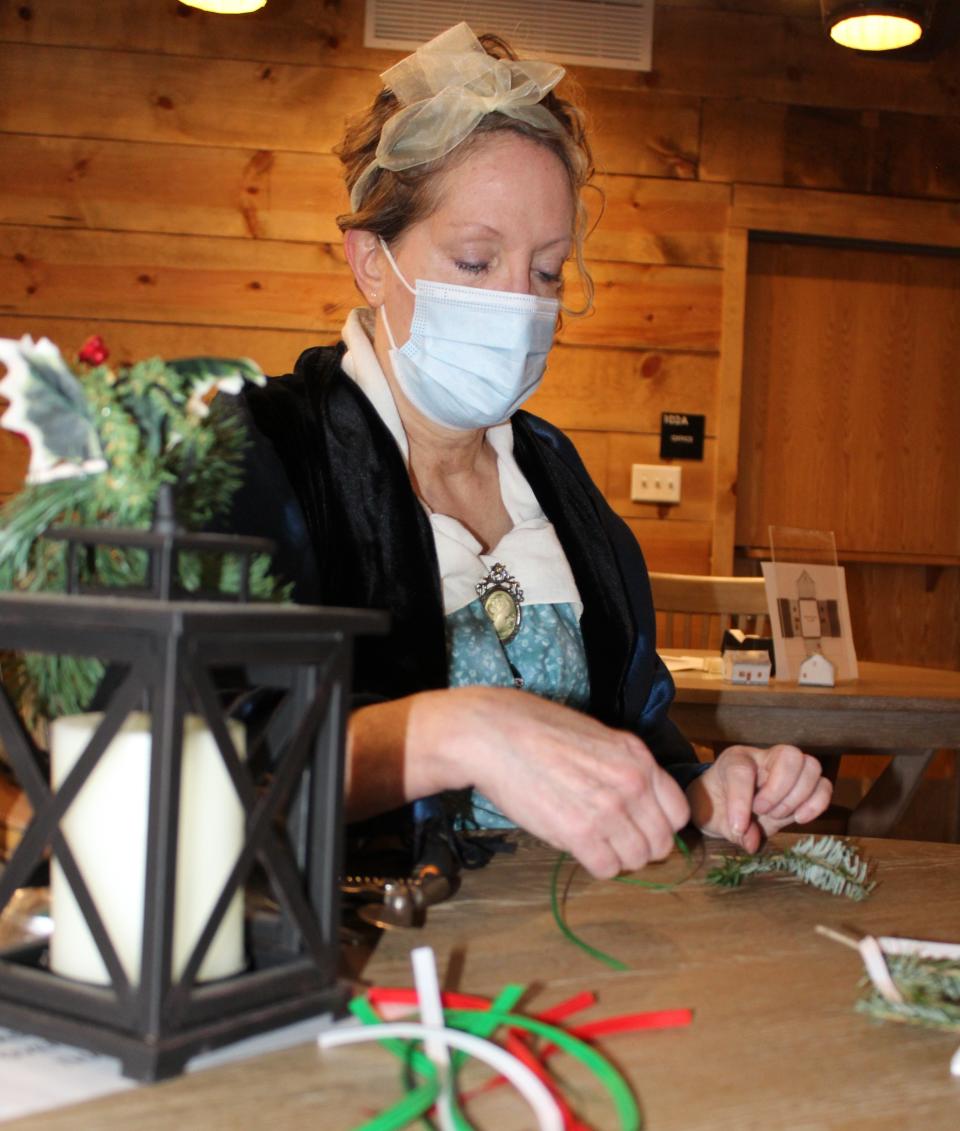
Through crafts, food and storytelling, families and friends were introduced to French Christmas traditions Saturday.
French Noel, hosted by staff members and volunteers at River Raisin National Battlefield Visitor Center, 333 N. Dixie Hwy (formerly the Monroe Multi-Sports Complex), shared stories of how French families lived along the River Raisin and celebrated Christmas more than 300 years ago.
Guests were greeted with the sounds of the season as Teresa Savage of Canton played the fife, a small shrill flute often used with a drum in military bands.
Savage, a 10-year member of Friends for the River Raisin Battlefield, performed several songs including “God Rest Ye Merry Gentlemen.”
Under COVID-19 guidelines issued by the National Park Service, the free event open to the public required everyone to wear masks regardless of vaccination status or location.
Inside the new center, which opened in May, volunteers, dressed in period clothing, shared stories of how French settlers living along the River Raisin from the late 1700's until the War of 1812 celebrated the Christmas season.
In one area of the center, Monroe resident Vicky Pontious made Christmas decorations using sprigs of pine. Pontious explained early French settlers did not decorate their homes with Christmas trees. Instead, they gathered pieces of greenery, tied them with ribbon and hung them in windows.
Another French custom was the Le Révellion de Noel, also known as Christmas dinner. After attending midnight mass, French families would eat a special meal to celebrate the beginning of Christmas day.
Dinner would consist of dishes like chicken and onions, a crusty baguette served with cheese, a bowl of parsnips, green beans and carrots tossed in a vinegar dressing, fresh cranberry sauce, gingerbread cake topped with pears and whipped cream and tourtière, a meat pie traditionally eaten on Christmas.
Cathy Taylor of Taylor shared a family recipe for the pie along with stories about her mother, Theresa Des Jardin, the first generation of her family to come to America.
"Some people find it odd to use as many ‘spices’ such as cinnamon, clove, nutmeg and mace in a meat pie,” Taylor noted in her recipe. “But the tradition for this goes back to the 1600's when the meats available to be used in this type of pastry were very strong flavored ‘wild’ meats (venison, boar, pigeon and goose) and the tradition was to help enhance or even cover up the flavors by adding so many spices and herbs.”
Beverages, like hot chocolate, were made by melting a piece of chocolate into a paste and adding hot water or milk and sugar. Taylor said Cognac, a type of brandy, or wine was sometimes added to the warm beverage before serving.
Kim Hogan of Monroe attended the annual event with her grandchildren, nine-year-old Levi Lee, and his sister, Kendyl, 6.
Their first stop was the game table to learn about the games French children played more than 300 years ago.
Monroe resident Jeanne Micka said many games were made of wood or items found around the home and children played Cat’s Cradle, a sequence game played with looped string or made a bilboquet, a ball and cup game.
In the main lobby of the center, stood a 5 x 40-foot display of the River Raisin settlement before the War of 1812.
At the time, 90 percent of the residents were French Canadian and used the river as a way of travel as well as a source for food and water.
Created by Marty Bertara of Wyandotte, the massive model depicts and identifies several families who owned farms in the area like Louis Susor, and Joseph Menard along with three Navarre homesteads owned by Francois, Isidore and Jacques.
Bertera still has to add a few finishing touches to the diorama that took him close to a year to build.
"Every community needs a sense of place and where they are from. Additionally, it is important context to the story of the battles that took place in January 1813,” Rusty Davis said. “At the time, the River Raisin settlement was a well-developed community centered around the Catholic Church. The war came to their back yards and disrupted their lives in a major way. It is important that we remember these early settlers and celebrate their French heritage lifeways in remembrance.”
Davis has been a member of Friends of the River Raisin Battlefield for more than 10 years and serves as the group’s treasurer.
"The Friends of the River Raisin Battlefield support the battlefield and present accurate interpretation of what life was like in the early 19th century. Both the civilian and military are represented. Our companion, Lacroix Company, represents the local militia of the time,” he added. “We sponsor several events each year and will be honoring the 209 anniversary of the battles on January 22, 2023. This annual event is open to the public. We invite people to visit our national park, learn about the trials and tribulations of the early residents and honor those that lost their lives in the turmoil that took place on these grounds.”
For more information about the park, call (734) 243-7136 or log on to
https://www.nps.gov/rira/index.htm
This article originally appeared on The Monroe News: Joyeux Noël / Battlefield celebrates French Christmas traditions

